The herbaceous annual or perennial flowering plant chrysanthemum (Chrysanthemum) is a member of the Asteraceae or Compositae family. This genus unites about 30 species, their representatives are found in zones with temperate and cool climates, with most of the species growing in Asia. Chrysanthemum has been cultivated by gardeners for more than 1,000 years, while the culture appeared on European territory in the 17th century. Most chrysanthemums are grown outdoors, but there are some that grow well both indoors and in greenhouses.
Content
Brief description of cultivation
- Bloom... As a rule, in autumn or winter.
- Illumination... Needs a lot of bright light, which must be necessarily diffused. East or West orientation windows are best suited.
- Temperature regime... In summer - from 20 to 23 degrees, in spring and autumn - from 15 to 18 degrees, and in winter - from 3 to 8 degrees.
- Watering... When a plant has intensive growth, it is watered at least twice every 7 days, at which time the soil mixture in the container should be slightly damp all the time.
- Air humidity... For normal growth and development, the bushes are recommended to be moistened daily from a sprayer in the morning and evening.
- Fertilizer... During intensive growth, an adult flower needs regular feeding, which is carried out 1 time in a week and a half, for this they use mineral fertilizers. If the flower is fed with weak organic solutions, then fertilizers are applied to the substrate every four days. As soon as the buds begin to form, feeding should be stopped.
- Dormant period... After the bush has faded, cut off all the shoots and put it in a cool (2 to 3 degrees) and dark place, where it will be until spring comes. In spring, young stems will begin to actively grow near the bush.
- Transfer... Young chrysanthemums are transplanted every year at the beginning of the growing season. Adult specimens need more rare transplants, which are carried out once every 2 or 3 years.
- Reproduction... By dividing the bush and cuttings, much less often by seed.
- Harmful insects... Aphids, chrysanthemum nematodes, thrips and slobbering pennies.
- Diseases... Can get sick with powdery mildew, septoria and gray rot.
Features of home chrysanthemum
Home chrysanthemum is a compact and not very tall bush. The fact is that during its cultivation, special preparations are used that artificially stop growth. However, there were such cases when garden-sized bushes grew from a purchased cutting of a home chrysanthemum.
As a rule, undersized varieties of Chinese or mulberry chrysanthemum are grown in indoor conditions. The height of the lush flowering bushes can vary from 0.15 to 0.7 m. Their flowers are both large, reaching about 50 mm in diameter, and small (no more than 25 mm in diameter). And the varieties may also differ in the shape of the flowers. Also, some varieties of Indian and Korean chrysanthemums are cultivated at home by flower growers.
Indoor chrysanthemum blooms are usually observed in autumn and winter. In order for the bush to bloom as long as possible, it needs to be properly looked after, and it will also need special conditions for growth.
Chrysanthemum care at home
In order for the cultivation of chrysanthemums in indoor conditions to be successful, it must provide the correct temperature regime, the optimal level of lighting and timely watering.
Temperature regime
In order for the home chrysanthemum to grow and develop normally, as well as bloom for a long time, it needs a certain temperature regime. This culture does not belong to the thermophilic, in connection with this summer it will feel great at temperatures from 20 to 23 degrees. In spring and autumn, the room where the plant is located should be from 15 to 18 degrees Celsius, and in winter it is kept in a cold place (from 3 to 8 degrees). If you strictly adhere to the established temperature regime, then the flowering of the bush will be as lush and long as possible.
Illumination
For growing chrysanthemums, windows of east or west orientation are perfect, since it needs a lot of diffused sunlight. On the northern windowsill, the flowering of the bush will be poor, because there it does not have enough light, but if you put it on the south window, it can wither away due to excessively bright lighting. The best place for growing such a culture is considered to be a cool loggia, balcony or veranda, while it must be well lit. In the warm season, the flower is moved to the garden if possible.
Throughout the growing season, the chrysanthemum will need regular pinching and pruning, thanks to which the bush will be lush and compact. In addition, you should systematically tear off yellow leaves and inflorescences that have begun to fade.
Watering
In order for the chrysanthemum to grow healthy and bloom well, it must be watered in a timely manner and correctly. This flower belongs to moisture-loving plants, in this regard, the substrate in the container should be constantly slightly damp. During the growing season, the bush must be watered at least twice every 7 days. In no case do not allow the earth clod to dry out. But also make sure that there is no liquid stagnation in the soil mixture, and also in the pan.
On hot days, it will not be at all superfluous to moisten the bushes from a spray bottle. Such a procedure is carried out in the evening or morning. The plant will be able to do without moisture, but in this case, in the heat, it will look more lethargic and less attractive.
Chrysanthemum transplant
Young chrysanthemums grown indoors are recommended to be transplanted regularly once a year in spring, while taking a new pot a little more than the old one. Adult bushes can be replanted less often, namely, once every 2 or 3 years.
For transplantation, a soil mixture is prepared, which should include: turf, white sand, garden soil and humus (4: 1: 4: 1).In order for the culture to bloom more magnificently, a small amount of bird droppings is poured into the finished substrate. For planting it, in no case can you use acidic soil, since it reacts extremely negatively to it.
A good drainage layer is made at the bottom of the new container, and the soil mixture is spilled with boiling water before planting and wait until it dries out.
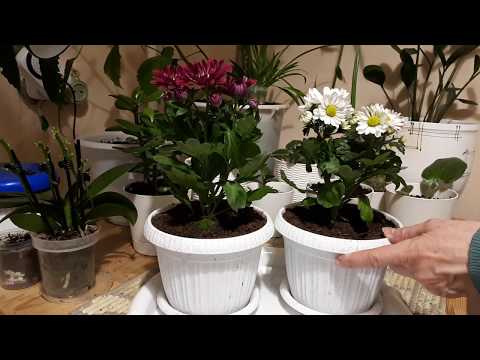

Watch this video on YouTube
Fertilizer
The flower needs to be fed regularly. For this, it is recommended to use a complex mineral fertilizer, the fact that the phosphorus and potassium contained in it contribute to the stimulation of flowering. In order for the bush to bloom much earlier than the due date, a solution of potassium monophosphate in a ratio of 1:10 is introduced into the soil, or another complex fertilizer is used, in which the proportion of phosphorus, nitrogen and potassium is 3: 1: 2. You can also feed such a flower with liquid organic fertilizers.
An adult plant is fed with minerals once every 1.5 weeks, while every four days a mullein solution is added to the soil mixture (1 part of fertilizer per bucket of water). As soon as bud formation begins, the chrysanthemum is stopped feeding.
Post-flowering care
Immediately after flowering ends, the plant must be put into a dormant state. Cut off all the stems from the bush and transfer the pot to the cellar, where it will stay at a temperature of 2 to minus 3 degrees until spring. Immediately after young shoots begin to appear, the bush is transplanted into a larger pot and returned to the house in its original place.
Reproduction methods
Chrysanthemum propagation by cuttings
Homemade chrysanthemum is most easily propagated by non-lignified green cuttings. During the preparation of cuttings, lateral shoots are cut from the branch, while the length of the segment should be 10 centimeters. All leaf plates are cut off from the bottom of the segments, and then they are placed in a container with water for rooting. After the roots reach 40-50 mm in length, they are planted in pots, while several pieces are planted in one container at once. Do not forget to make a good drainage layer at the bottom of the pot; use a slightly alkaline or neutral soil mixture. After planting, the substrate is tamped around the cuttings and watering is carried out. It is also recommended to pinch the tops of the cuttings, this helps to stimulate the growth of lateral shoots.
Cuttings for rooting can be planted directly into the soil mixture. They must be covered with a plastic cap on top, which will help create the greenhouse effect necessary for successful rooting. Every day, the cuttings are ventilated, for this, the cap is temporarily removed, do not forget to remove the accumulated condensate from its surface. After the turgor of the foliage is restored, rooting will be completed, and the shelter can be removed.
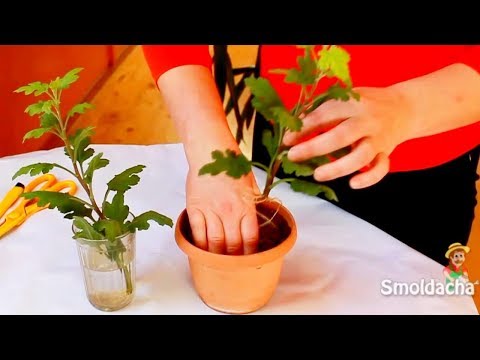

Watch this video on YouTube
Dividing the bush
You can propagate the culture by dividing the bush during transplantation. Remove the plant from the container, carefully remove the remaining soil mixture from the root system and rinse it. Then take a pre-sterilized very sharp instrument and cut the bush into several parts with it, while each division should have several stems and well-developed roots. Treat the cut areas with charcoal powder. Delenki need to be planted in a pot in the same way as adult bushes.
Growing from seeds
Most often, Korean hybrids and varieties are propagated by seeds. Sowing seeds is carried out in low containers, at the bottom of which a good drainage layer is made. They are filled with a soil mixture, which includes humus and peat (1: 1); before sowing, it must be calcined at a temperature of 110 to 130 degrees. For sowing, you can also use a store-bought soil mixture for flowers, which also needs to be disinfected. It is not necessary to deepen the seeds of perennials into the soil mixture; they are only slightly pressed into the substrate.Crops are moistened from a sprayer and covered with a film (glass). The container with crops is transferred to a warm place (from 23 to 25 degrees), they need systematic ventilation, as well as timely watering. Also, do not forget to remove condensation from the surface of the shelter in time. The first seedlings should appear after 10-15 days, immediately after that the container is moved to a well-lit place. The shelter from the container is not removed immediately, allowing the seedlings to get used to the new conditions. To do this, glass is removed from them every day, increasing the duration of airing gradually, and it is removed completely only when the plants are fully adapted. A pick on individual containers is carried out at the stage of forming 2–4 of this sheet plate. A drainage layer is poured on the bottom of the cups or pots, and the soil mixture for planting is used the same as for sowing. When diving, try not to injure the roots. To make rooting more successful and faster, the transplanted seedlings are treated with a solution of Epin-Extra or Zircon. The cut seedlings are transferred to a cooler place (from 16 to 18 degrees) and then they are looked after in the same way as for adult chrysanthemums.
Chrysanthemum pests and diseases
Diseases
If the chrysanthemum is in unsuitable conditions for it and does not receive proper care, then it can be struck by such fungal diseases as: septoria, powdery mildew and gray rot.
If the plant is affected by powdery mildew, then a whitish bloom forms on its petioles, foliage and stems. Over time, it thickens and becomes brown, due to which the decorative effect of the chrysanthemum suffers. To cure a flower, it should be treated with a solution of a fungicidal preparation, for example: Topsin, Skor, Fundazol or Topaz.
In chrysanthemum affected by septoria, specks of rusty or brownish-gray color with yellow edging appear on the foliage. Over time, these spots increase and, eventually, occupy the entire surface of the leaf plate. In the middle of such spots, mushroom pycnidia appear, which are black dots. Affected shoots and foliage begin to dry, the stems turn brown, wrinkle and bend. Try to isolate the affected bush from other plants. Cut off all diseased stems and foliage from him, and then spray it with a solution of Oxychom, Kuproksat or copper sulfate. You can put a bush next to other indoor flowers only when it is fully recovered.
A chrysanthemum affected by gray rot, also called botrytis, is relatively difficult to cure. In this case, a fluffy bloom of gray color forms on the surface of the above-ground parts of the plant, the tissues of the flower underneath die and rot appears. To cure the plant, it should be treated with a bordeaux mixture solution, while it is best to spray the bush before flowers form on it.
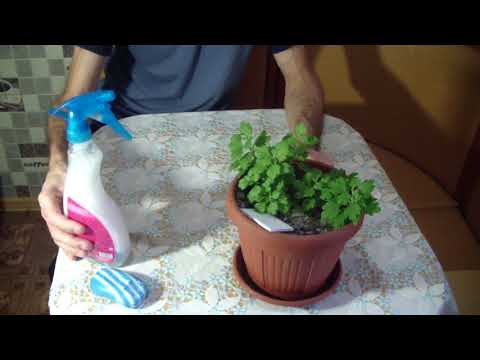

Watch this video on YouTube
Harmful insects
Chrysanthemum nematodes, slobbering pennies, aphids or thrips can settle on the bushes. Pennits, thrips and aphids are sucking harmful insects that suck out the plant's cell sap. To get rid of them, the flower is sprayed with a solution of an insectoacaricidal agent, for example: Derris, Biotlin, Aktellik, Confidor or Aktara.
The nematode is a very small filamentous worm that cannot be seen with the naked eye. The fact that such a pest has settled on the plant can be understood by the mosaic specks of white color that appear between the veins of the lower leaf plates. Over time, these spots turn brown. After a while, folding, drying and flying around the affected foliage is observed, while mosaic spots begin to form on the upper leaf plates.As a rule, bushes are affected by nematodes through a substrate that has not been disinfected. It is impossible to cure a flower affected by a nematode; in this regard, it will have to be burned along with the soil mixture in the pot.
Types and varieties of domestic chrysanthemums with photos and names
It was already mentioned above that dwarf and undersized varieties, as well as hybrids of Korean, Chinese and Indian chrysanthemums, are cultivated at home by flower growers. The Korean chrysanthemum is distinguished by its hybrid origin, however, no one has ever met the mulberry chrysanthemum in natural conditions. The history of such a plant is very confusing and complex, so it is better not to delve into it. Below will be described those varieties of chrysanthemums that are most popular among gardeners:
- Malchish-Kibalchish... The bush reaches about 0.3 meters in height and up to 0.6 meters in diameter. This variety has a very lush flowering. Its inflorescences are non-double, similar in structure to chamomile, they have a lilac-pink color, and reach about 70 mm in diameter.
- Evening lights... The compact bush reaches a height of about 0.35 meters. The diameter of simple inflorescences is up to 55 millimeters, they are colored red, with a yellow ring around the middle.
- First snow... The height of the bush in such a magnificently flowering variety does not exceed 0.35 meters, while in diameter it can reach up to half a meter. Semi-double inflorescences of white color have a diameter of about 50 millimeters.
- Mascot... The bush is low, only about 0.25 meters. Small dark crimson inflorescences reach about 20 mm in diameter.
- Cheburashka... Compact, hemispherical bushes reach a height of about 0.4 meters. The diameter of the lilac double inflorescences is up to 40 millimeters.
- Barbara... In such a profusely flowering variety, the bush reaches a height of 0.4 meters. Terry lilac-pink inflorescences with a yellow center are formed so much that sometimes it is impossible to see the foliage because of them.
- Flamingo... The height of the bush is about 0.5 meters. In diameter, the pale pink inflorescences reach about 75 millimeters. The middle of the inflorescence is of a more intense color.
- Pink cream... The bushes do not exceed half a meter in height. The diameter of the densely double inflorescences is about 80 millimeters, they are painted in a pinkish-lilac color, which after a while becomes pink-cream.


- Leaf fall... The height of such a chameleon plant is about 0.45 m. The pinkish-red inflorescences reach about 70 mm in diameter. They can change their color to flesh-yellow.
- Raspberry pompom... Such a variety is dwarf, the height of its bushes does not exceed 0.3 m. The diameter of the hemispherical inflorescences is about 60 mm, they are painted in a raspberry-pink color.
- Okishore... The height of a powerful bush is about half a meter, the diameter of the inflorescences is about 80 mm, their color is pinkish-lilac.


- Syaivo... The variety, created by Ukrainian breeders, reaches a height of about 0.6 meters. The diameter of large egg-yellow inflorescences is about 80 mm.
- Apple blossom... The stems of the half-meter bushes are powerful and thick. Terry inflorescences reach about 80 mm in diameter, they have a white-pink color.
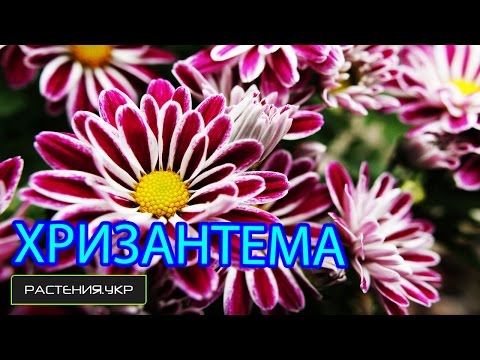

Watch this video on YouTube

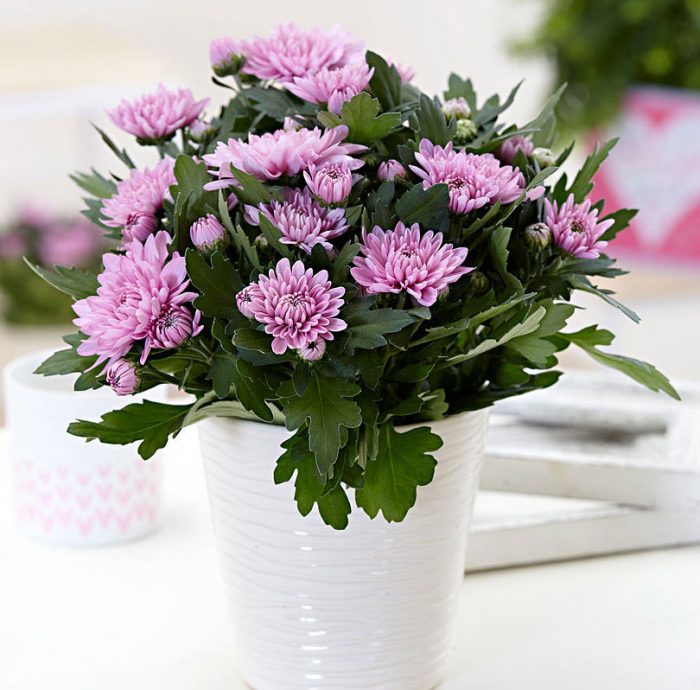
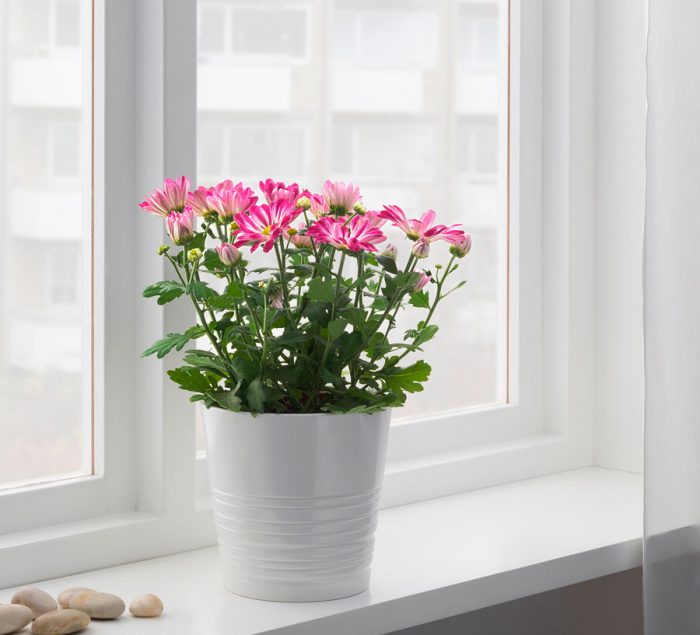
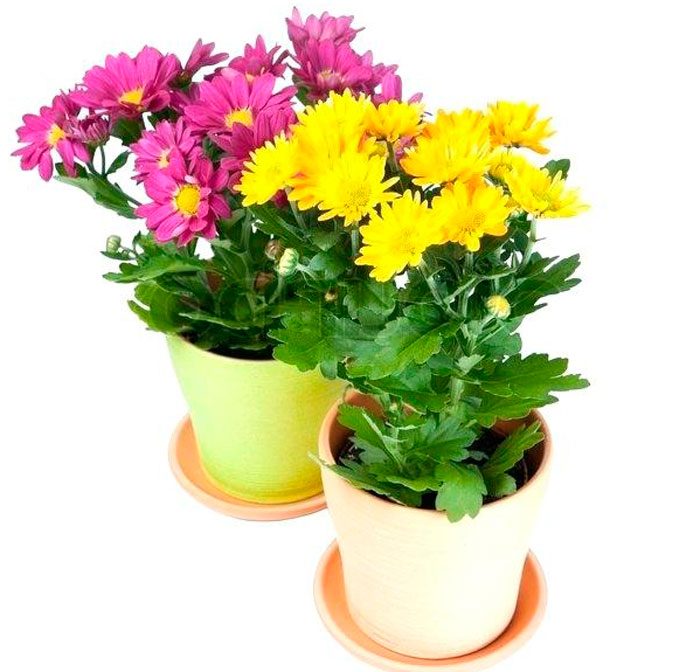
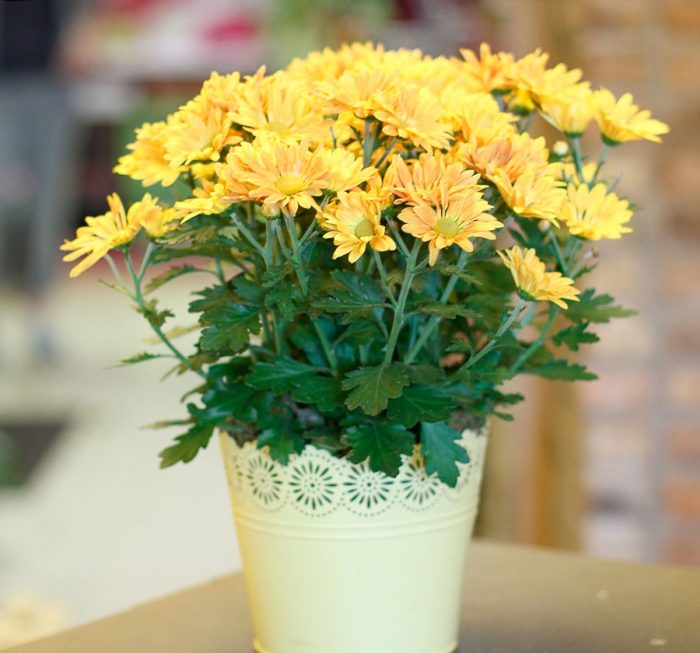
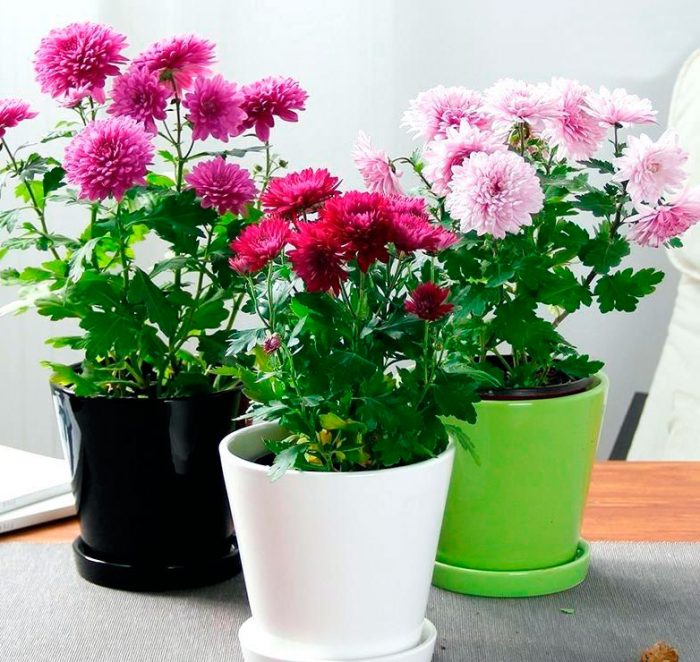
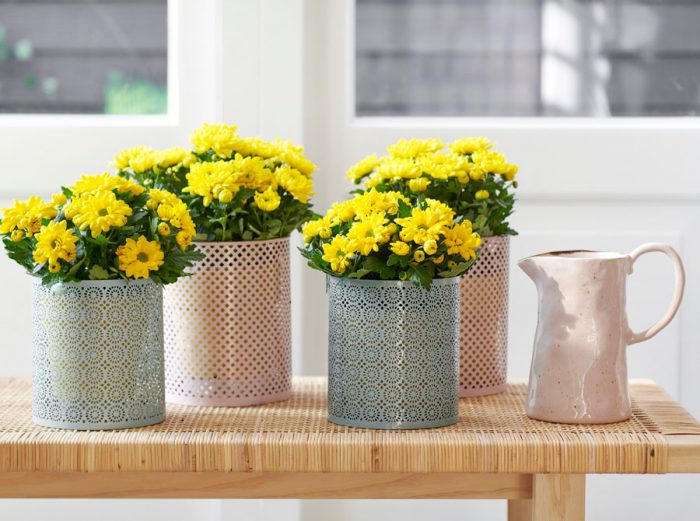
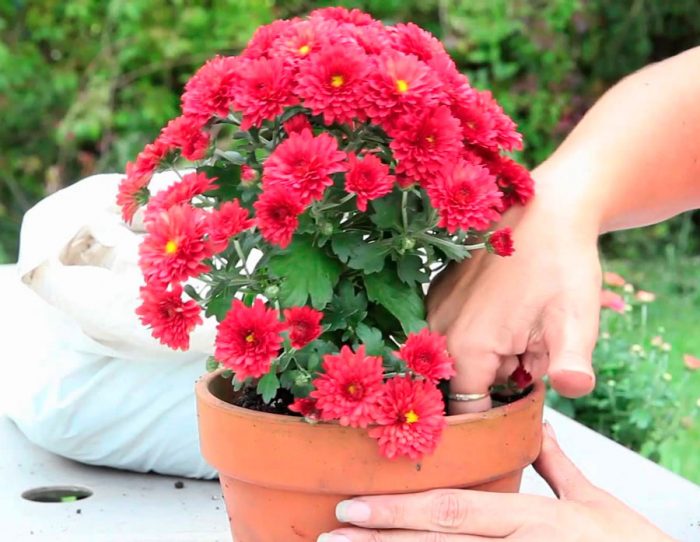
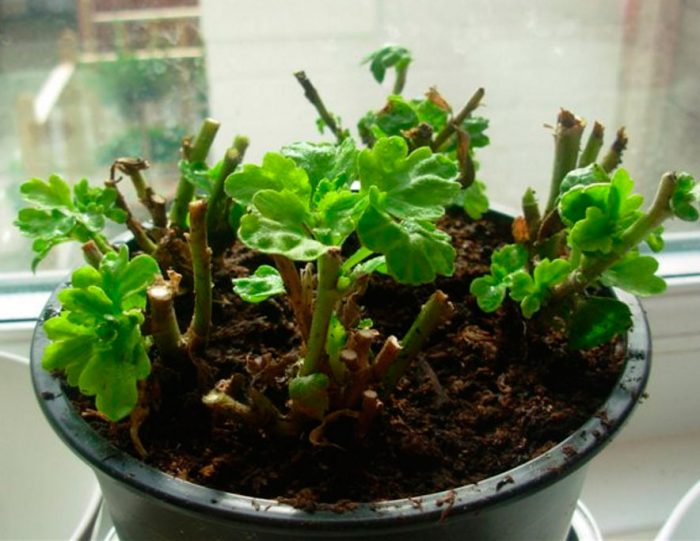
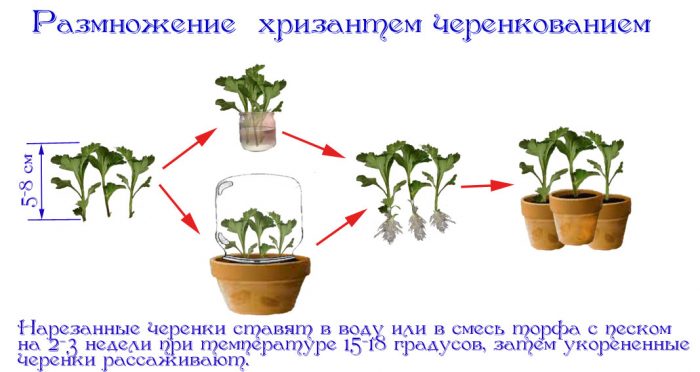
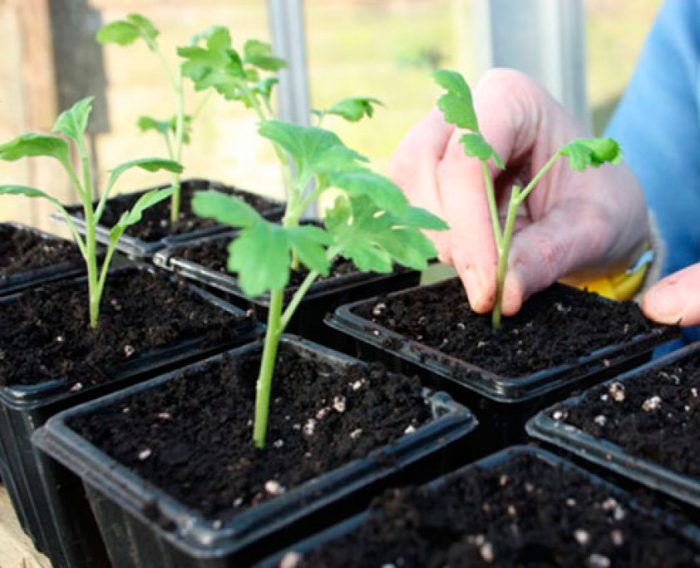
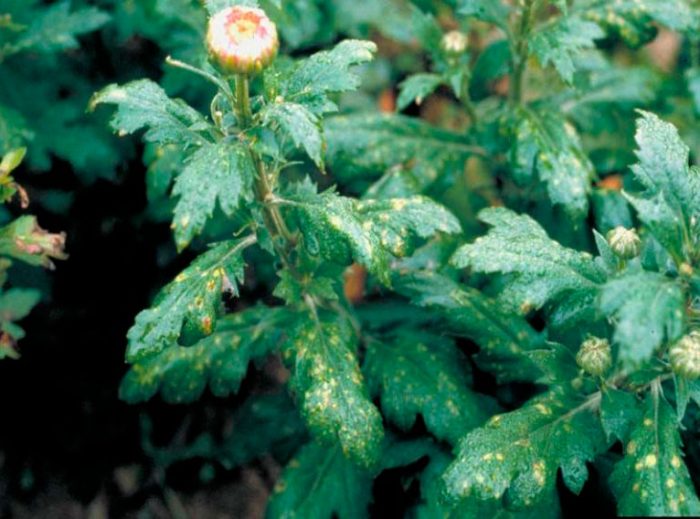
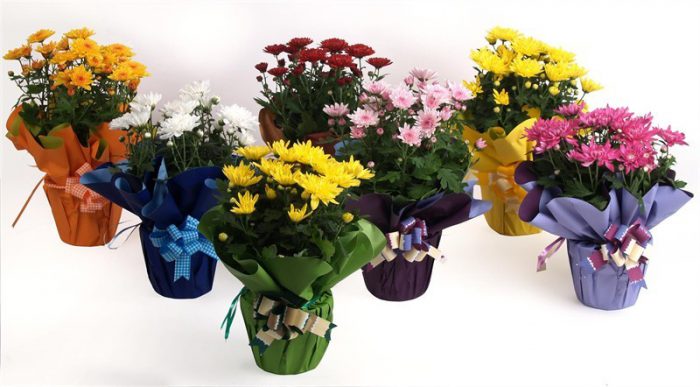

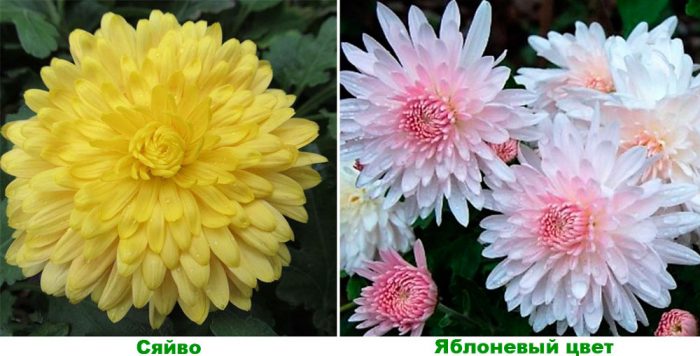


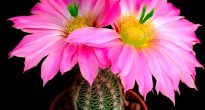



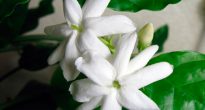



Today I bought a chrysanthemum at Pyaterochka. The flowers are white, lilac at the edges, and the middle is yellow. The grade was not mentioned. It is written that from the Netherlands. Beautiful, so I decided to buy. I found an article about chrysanthemums on the Internet. I think I can keep the flower in good conditions. At least, judging by the article, chrysanthemums are not whimsical.
I live in the city on the 3rd floor. Of course there is no cellar. In summer, the heat is up to 32 and in winter on the balcony there are differences from minus to plus, and how can I observe the temperature regime?